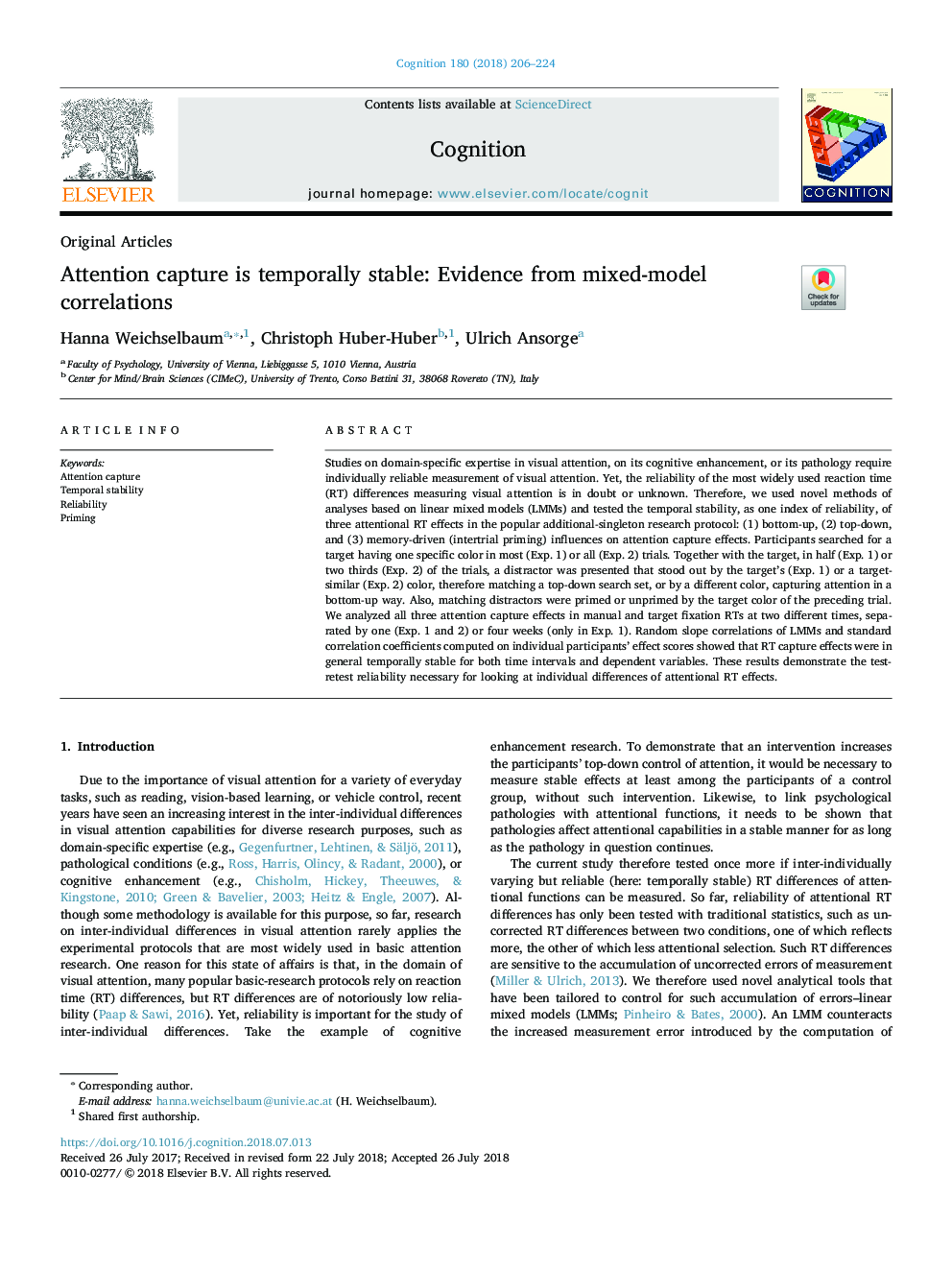| Article ID | Journal | Published Year | Pages | File Type |
|---|---|---|---|---|
| 7285072 | Cognition | 2018 | 19 Pages |
Abstract
Studies on domain-specific expertise in visual attention, on its cognitive enhancement, or its pathology require individually reliable measurement of visual attention. Yet, the reliability of the most widely used reaction time (RT) differences measuring visual attention is in doubt or unknown. Therefore, we used novel methods of analyses based on linear mixed models (LMMs) and tested the temporal stability, as one index of reliability, of three attentional RT effects in the popular additional-singleton research protocol: (1) bottom-up, (2) top-down, and (3) memory-driven (intertrial priming) influences on attention capture effects. Participants searched for a target having one specific color in most (Exp. 1) or all (Exp. 2) trials. Together with the target, in half (Exp. 1) or two thirds (Exp. 2) of the trials, a distractor was presented that stood out by the target's (Exp. 1) or a target-similar (Exp. 2) color, therefore matching a top-down search set, or by a different color, capturing attention in a bottom-up way. Also, matching distractors were primed or unprimed by the target color of the preceding trial. We analyzed all three attention capture effects in manual and target fixation RTs at two different times, separated by one (Exp. 1 and 2) or four weeks (only in Exp. 1). Random slope correlations of LMMs and standard correlation coefficients computed on individual participants' effect scores showed that RT capture effects were in general temporally stable for both time intervals and dependent variables. These results demonstrate the test-retest reliability necessary for looking at individual differences of attentional RT effects.
Related Topics
Life Sciences
Neuroscience
Cognitive Neuroscience
Authors
Hanna Weichselbaum, Christoph Huber-Huber, Ulrich Ansorge,
